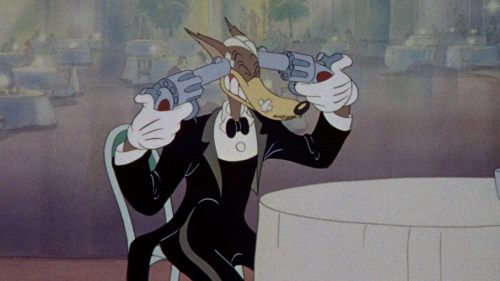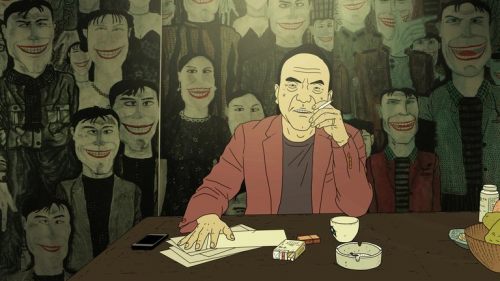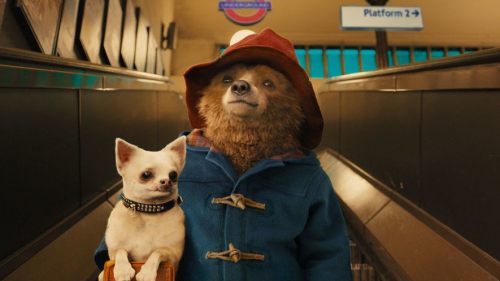BOY AND THE WORLD Review: An Ugly World Worth Fighting For
Last year, animation distributor GKIDS managed to score two nominations in the AMPAS’ Best Animated Feature Film category: Tom Moore’s Song of the Sea and Isao Takahata’s The Tale of Princess Kaguya. By contrast, their 2015 slate looks less prestigious, with two mixed bags in Extraordinary Tales and Kahlil Gibran’s The Prophet, plus the good but forgotten When Marnie Was There. But peak-end bias is real, because GKIDS’ last offering - Brazilian filmmaker Alê Abreu’s stunning Boy and the World - is also their best.
If nothing else, it’s certainly their most unique release, and sometimes all you need to set yourself apart from your peers is singularity. Boy and the World is one of a kind in its field, a propulsive and freeform piece of political commentary that’s as sparsely drawn as it is vividly realized. You will not see an animated film in 2015 quite like it. Granted, this could be said of any number of the year’s animated films, from Pixar’s triumphant Inside Out, to Charlie Kaufman’s lugubrious Anomalisa, to Aardman Animation’s Shaun the Sheep movie, and even to The Peanuts Movie; none of these things look, sound, or feel the same, and so each could be called “one of a kind” in their own right. But Boy and the World uses its visual scheme to buttress its sense of perspective better than any other animated effort in 2015. It is an abstract work of childlike awe that refuses to dichotomize one quality from the other.
That’s a snooty way of saying that children may not find much in Boy and the World to hang onto. But then again, maybe they will. Kids are often deceptively smart and intuitive in ways that adults just aren’t, after all. If Abreu is determined not to lead viewers, young and old, around by their noses by hewing to a pesky linear narrative, then that either speaks to his eccentricity as a director or his respect for a child’s comprehensive capacity. That feels like the obvious conclusion here: as you might guess by the title, Boy and the World’s hero is, well, a boy, living with his mother in their isolated, rural village when his father hops aboard a train to head to the big city and ostensibly find better opportunity for work within its urban embrace.
But the boy just can’t be content with that. He follows his dad into - you guessed it - the world, which Abreu elects to paint as an absolutely horrible place to live. The further the boy gets from his pastoral home, the more terrifying, lonely, and corrupt the world becomes. Once he arrives in that big city, Boy and the World immediately takes on a sociopolitical bent, mixing allegory and folklore with sharp criticisms of a nation with a penchant for reckless industrialism and wanton consumerism. Where in Brazil has Abreu taken us? Maybe we’re in Rio de Janeiro, or Brasília, or São Paulo; maybe the city is meant to be a composite of all three. As the boy gambols about in the film’s opening minutes, he spots the city’s towering, black-tipped spires looming ominously in the distance. We could be looking at Mordor for all that it matters.
Unsurprisingly, the closer we get, the worse things look. Boy and the World is an inverse version of When Marnie Was There, in which the protagonist is sent away from civilization out of concern for her health. Abreu wants to take us on a tour his film’s nameless burghal and explore both what it takes to build a metropolis and what it means to live in one. The boy meets a few adults along the way, too, specifically an old man working in Brazil’s cotton fields and a younger man who gets around on a bicycle and rents out an apartment where he spends his nights by himself, watching television shows that blare and trumpet the promotion of meaningless material excesses. These superficial luxuries, of course, come at the cost of Earth’s natural resources. Toward the end of the film, the reel appears to burn away, and Abreu replaces animation with actual documentary footage of men cutting down forests like pigs through bone. It’s an intentionally jarring reminder of our reality that interrupts Abreu’s otherwise fantastical pseudo-fable.
Depending on your feeling, his best flourish throughout the film is either his vibrantly scribbled aesthetic or his knack for conveying his ideas without using language, which is one of the more surprising universal themes of 2015’s cinema. As a creative medium, film can speak to any audience, anywhere, and still be understood regardless of any cross-cultural boundaries; see Mad Max: Fury Road and The Tribe, as well as Shaun the Sheep, which is the best available analogue to Boy and the World for its total lack of recognizable dialect. It’s worth noting that actual dialogue here would potentially clang with the film’s ending, in which the boy’s metaphorical journey to manhood is made literal (possibly, maybe). But that’s part of the joy of the movie: all of the essential “stuff” of Abreu’s story is understood, while the film’s more philosophically abstruse conventions are open to myriad interpretations. The boy, trapped on a shipping crate, takes a trip to the SimCity 3000-inspired floating megacities where society’s elite reside; riots break out between farmers and militarized police, each championed by great mythical birds that slash and claw at one another in the sky.
One of those birds, by the way, happens to be a phoenix. Should you take Abreu’s film as a dirge for our planet, let that creature serve as your symbol of hope; for all of the film’s nihilistic impulses, it is ultimately a paean instead of a threnody. We do ugly things to this world, Abreu tells us, and all in the pursuit of achieving shallow, uglier aims. But it is our world, it is a beautiful world, and it is a world worth fighting for.



